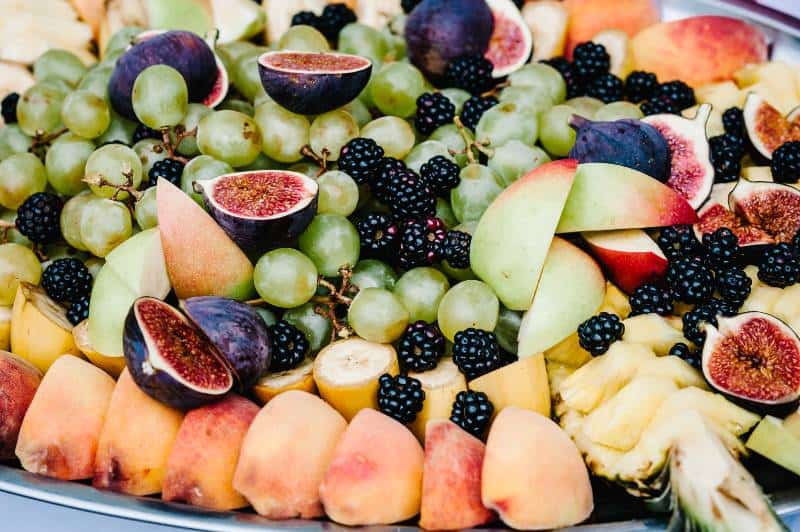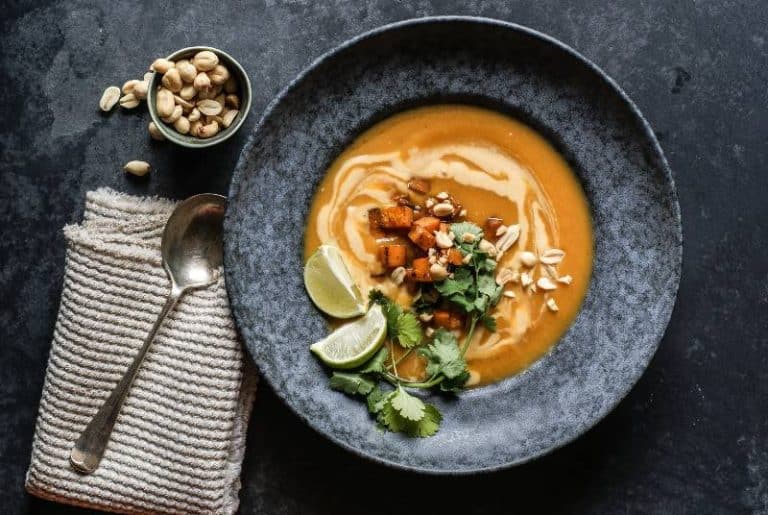Taste of Paradise: A Guide to Thailand’s Exotic Fruits
If your taste buds are looking for a truly exotic and unique experience, then look no further than Thailand’s abundant selection of fruits. From fragrant durian to sweet rambutan, Thailand offers an array of delicious and interesting tropical treats that you won’t find anywhere else in the world. With their intriguing shapes, colors, flavors and textures, each fruit is sure to tantalize your senses and transport you away from everyday life into something wilder and more exciting. Explore this blog post for a closer look at these remarkable fruits – get ready for some unforgettable flavor!
Thailand’s exotic fruits are a tropical feast for the senses. Experience succulent mangoes, fragrant durians, sweet pomelos, vibrant dragon fruits, and tangy rambutans. Don’t miss the creamy custard-like flesh of mangosteens or the juicy sweetness of longans. They’re a thrilling exploration of tastes and textures
Key Takeaways
- Thailand boasts a wide range of exotic fruits, each with its unique taste, texture, and appearance, reflecting the country’s rich biodiversity.
- Fruits play a vital role in Thai culture, from religious ceremonies to daily meals, showcasing their deep-rooted importance in Thai society.
- Beyond their delightful tastes, Thai fruits offer numerous health benefits and are integral to many traditional Thai dishes and desserts.

Historical Context
From ancient rituals to modern cuisine, fruits play a pivotal role in Thai culture and history. Various practices and ceremonies in Thailand reflect their significance, and over time, the tradition of fruit farming and trade flourished into a thriving industry. Let’s delve into the historical context of fruits in Thailand to gain a deeper appreciation for these tantalizing tropical delights.
The Role of Fruits in Ancient Thai Traditions and Ceremonies
- Religious Ceremonies: Fruits have long been used in religious rituals and Buddhist offerings across the country. For example, fruits such as bananas, coconuts, oranges, and pomegranates are offered to monks and placed on altars as a sign of respect to Buddha and ancestors.
- Fruit Carving: Dating back to the 14th century, the beautiful and intricate art of fruit carving originated in Thailand. Often used for special occasions and religious ceremonies, these stunning creations symbolize abundance and are believed to deliver blessings of prosperity and happiness.
- Wedding Rituals: Traditional Thai weddings often included the exchange of fresh fruits as a symbol of fertility, prosperity, and nourishment for the couple’s future. Fruits such as mangos, bananas, and longans were seen as tokens of love and blessings for a happy marriage.
Evolution of Fruit Farming and Trade in Thailand
- Ancient Practices: Fruit cultivation has deep roots in Thailand, with archaeological evidence tracing the practice to prehistoric times. Historical records reveal the trading of mangoes, jackfruits, and bananas with neighboring countries from as early as the 4th century BCE.
- Irrigation Systems: The development of extensive water management systems played a vital role in the expansion of fruit farming. King Ramkhamhaeng, who ruled during the Sukhothai period (13th to 14th centuries), is credited with promoting agriculture and developing irrigation systems that supported fruit farming.
- European Influence: European merchants introduced tropical fruit varieties from the Americas in the 16th and 17th centuries, which eventually found a place in Thai agriculture. These fruits included pineapples, custard apples, and guavas.
- 20th-Century Developments: The 20th century marked significant advancements in fruit farming, including the development of new cultivars, the expansion of farmland, and improvements in production techniques. In the 1950s and 1960s, the Thai government launched campaigns to promote the cultivation of crops, including fruits, to fight poverty and improve nutrition. Fruit farming went on to become a crux of the Thai economy.
- Modern Fruit Trade: Today, Thailand is one of the world’s major fruit exporters, serving both local and international markets. Thai fruits, including mangosteens, durian, lychees, and rambutans, are in high demand globally.
The historical context of fruits in ancient Thai traditions and their evolution into a vibrant trade provides a fascinating insight into Thailand’s rich cultural heritage and its prominent role in global commerce. Enjoying these tropical flavors leaves a deeper appreciation for their significance, transcending beyond just taste and nourishment, into the realm of tradition and history.
List and Description of Exotic Fruits
Thai Exotic Fruits: A Burst of Flavors and Legends
- Durian: The King of Fruits
Commanding the throne, durian is Thailand’s most controversial fruit, often causing a divide between those who relish it and those who recoil from it. Its robust body houses cream-like flesh notorious for its distinct aroma, which you may either find heavenly or alarming. Do you dare to hold court with the king? - Mangosteen: The Queen of Fruits
Wearing a hard purple robe, Mangosteen graces the royal court with a sublime tender, sweet interior. Known for its delicate flavor and high nutritional value, this regal queen is truly a crowd-pleaser among the tropical fruits. A taste of this royalty might leave you pledging your loyalty! - Rambutan: The Hairy Delight
Imagine a hairy bright red and green ball bursting with sweet, juicy goodness. That’s the rambutan for you! Once you maneuver past its unique, slightly spiky exterior, you’ll be relishing the luscious translucent flesh that regales your taste buds with a hint of refreshing sweetness. - Longan: The Dragon’s Eye
Crack open the light brown shell of this mystical fruit to reveal a translucent sphere resembling a dragon’s eye. The taste, however, is anything but fearsome—sweet and fragrant, a perfect testament to the longan’s magical place in Thai folklore. - Salak (Snake Fruit): The Scaly Wonder
Salak, with its reddish-brown scaly skin, truly lives up to its nickname, ‘snake fruit’. Underneath its snake-like armor lies sweet yet slightly tangy flesh — a delightful surprise that only enhances its mysterious appeal. - Pomelo: The Giant Citrus
The oversized cousin of the grapefruit, the pomelo packs a world of fun in its impressive size. Its thick rind encases sacs filled with sweet and tangy juice. A fantastic base for salads, or a refreshing eaten on its own, there’s no missing this giant in any fruit lineup. - Jackfruit: The Versatile Giant
This colossal fruit is not only known for its size but also for its versatility. Jackfruit’s fleshy interior can be enjoyed fresh, revealing a flavor between apple and pineapple. However, this giant can also be cooked and its pulled-pork texture and mild flavor make it a popular meat substitute in vegan cuisines. - Lychee: The Fragrant Sweetness
The lychee is a small fruit that packs a big punch. Its perfumed sweetness and slightly tart flavor are encased in a bumpy, red exterior. This dainty fruit is often found in specialty cocktails, desserts, and salads – all bearing testimony to its irresistible allure. - Tamarind: The Sour Pod
Wrapped in its brown, brittle shell, tamarind hides a tart secret. This sour fruit is a popular kitchen companion, lending its distinctive punch to Thai culinary classics. It’s the ultimate sweet-and-sour thrill for your palate! - Sapodilla: The Sugary Brown Fruit
The sapodilla might not win a beauty contest with its plain brown exterior, but its sweet caramel-like interior is a secret treasure trove of flavor. It is the perfect conclusion to an exotic fruit adventure, offering a comforting, sweet taste of tropical sunsets.
These flavors unprecedented, heralding from the exotic shores of Thailand, are anything but ordinary. These fruits, each unique and brimming with personality, are Thailand’s colorful bounty. They invite you to embark on an extraordinary taste adventure crafted by mother nature herself. Ready for the frenzy of flavors?
Health Benefits
Durian: The King of Fruits
- Nutritional Value: Durian is high in energy, minerals and vitamins, especially Vitamin C which strengthens the immune system.
- Traditional Medicinal Uses: Durian has been used to aid digestion and improve skin health in traditional Thai medicine.
Mangosteen: The Queen of Fruits
- Nutritional Value: Mangosteen is packed with Vitamin C, B vitamins, and essential minerals.
- Traditional Medicinal Uses: In Thailand, Mangosteen has been traditionally used to treat infections and promote wound healing, thanks to its anti-inflammatory properties.
Rambutan: The Hairy Delight
- Nutritional Value: Rambutan is a significant source of vitamin C and Iron to boost immunity and energy.
- Traditional Medicinal Uses: Its seeds have been traditionally used to control blood sugar levels and the fruit is known for its hydrating properties.
Longan: The Dragon’s Eye
- Nutritional Value: High in Vitamin C, longan also offers a good amount of iron and phosphorus.
- Traditional Medicinal Uses: Longan is traditionally believed to have a calming effect and is often used to settle upset stomachs and reduce stress.
Salak (Snake Fruit): The Scaly Wonder
- Nutritional Value: Filled with fiber, salak is also a fantastic source of Calcium and Iron.
- Traditional Medicinal Uses: Its high fiber content makes it a favorite for aiding in digestion and reproduction health.
Pomelo: The Giant Citrus
- Nutritional Value: Bursting with vitamin C, pomelo also offers heart-healthy potassium and dietary fiber.
- Traditional Medicinal Uses: Known for its detoxifying properties, pomelo has been traditionally used to clear bodily toxins and promote general health.
Jackfruit: The Versatile Giant
- Nutritional Value: Jackfruit is packed with vitamins A and C, and is also a great source of potassium, and dietary fiber.
- Traditional Medicinal Uses: Throughout history, jackfruit has been recognized in Thailand for its anti-inflammatory and skin-health-improving properties.
Lychee: The Fragrant Sweetness
- Nutritional Value: A stunning source of Vitamin C, lychees also provide B vitamins and plenty of antioxidants.
- Traditional Medicinal Uses: Lychees have been traditionally used to ease digestion and boost the immune system.
Tamarind: The Sour Pod
- Nutritional Value: Besides being high in Vitamin C, tamarind is packed full of B vitamins, and contains adequate levels of minerals.
- Traditional Medicinal Uses: Tamarind has been traditionally used for managing stomach discomfort and aiding digestion, as well as for clearing skin and reducing fever.
Sapodilla: The Sugary Brown Fruit
- Nutritional Value: Excellent source of dietary fiber, sapodilla is also a good provider of Vitamin C and minerals like Iron, Copper.
- Traditional Medicinal Uses: Sapodilla is known for its anti-diarrheal properties and is often used to soothe gastritis symptoms.
As we explore these vibrant exotic fruits, it’s evident they are not just a treat for the taste buds. Their immense nutritional value and time-tested medicinal uses make them a vibrant part of Thailand’s health and wellness heritage, offering a flourishing testimony to nature’s pharmacy. Remember, however, to seek professional advice before using them as alternative treatments.
Culinary Uses
Durian: The King of Fruits
- Dishes and Desserts: Durian is often used in Thai sweet treats like creamy durian sticky rice and durian ice cream. You can also find it in baked goods such as durian cookies and pastries.
- Preparation Tips: Open the fruit by making a cut in the hard shell and splitting it apart. Remember, this fruit has a strong smell that some find unpleasant!
Mangosteen: The Queen of Fruits
- Dishes and Desserts: Mangosteen is primarily enjoyed fresh in Thailand, served chilled as a refreshing dessert.
- Preparation Tips: Simply cut carefully around the equator of the fruit and then twist. It will pop open to reveal its sweet, juicy segments.
Rambutan: The Hairy Delight
- Dishes and Desserts: This fruit is usually consumed fresh or used in fruit salads. It can also be found in canned syrups in supermarkets.
- Preparation Tips: To open a rambutan, you can slice into the middle with a knife or use your fingers to pry it open.
Longan: The Dragon’s Eye
- Dishes and Desserts: The sweetness of Longan is enjoyed fresh or dried, both in desserts like Longan pudding or museli and savory dishes like soups.
- Preparation Tips: Simply peel off the outer shell to expose the juicy flesh. Discard the hard black seed inside.
Salak (Snake Fruit): The Scaly Wonder
- Dishes and Desserts: Salak is most commonly eaten fresh or used in fruit salads. It can also be made into wine or used as an ingredient in pickles.
- Preparation Tips: The scaly peel can be removed by pinching the tip and pulling off towards the base.
Pomelo: The Giant Citrus
- Dishes and Desserts: Pomelo is widely used in Thai salads like “Yum Som O,” a refreshing mix of pomelo, chicken or shrimp, and special Thai sauce.
- Preparation Tips: Cut the fruit into two halves, then peel off the skin and pith. You can then separate the sweet segments.
Jackfruit: The Versatile Giant
- Dishes and Desserts: Jackfruit can be enjoyed raw, or used in a variety of dishes like Thai curries, desserts, and stir-fries. Young jackfruit is also popular as a vegan meat substitute.
- Preparation Tips: Opening a ripened jackfruit can be a bit tricky. Consider using oil on your hands and the knife blade to prevent the sticky latex from clinging.
Lychee: The Fragrant Sweetness
- Dishes and Desserts: Lychee is often used in desserts like ice creams, jelly, or Lychee sorbet. It also makes an excellent cocktail ingredient.
- Preparation Tips: Peel off the outer cover, consume the juicy flesh, and discard the seed.
Tamarind: The Sour Pod
- Dishes and Desserts: Tamarind is vastly used throughout Thai cuisine, often seen in sauces, soups, stir fries, and desserts like sweet tamarind candy.
- Preparation Tips: Soak dried tamarind in warm water and then use your hands to separate the pulp from the seeds and fibrous material.
Sapodilla: The Sugary Brown Fruit
- Dishes and Desserts: This sweet fruit is typically eaten fresh, or made into jams, or served alongside cheese.
- Preparation Tips: Cut into the fruit as you would an apple. Discard the seeds and enjoy the sweet flesh.
From main dishes and salads to desserts and cocktails, these exotic fruits significantly contribute to the vibrant gastronomic tapestry that is Thai cuisine. Whether enjoyed on their own, featured in dishes, or used as integral ingredients, they provide a sensory experience that marries the worlds of taste and tradition.
Travel Tips
Thai Fruity Travel: Where to Go and What Fruit Festivals to Attend
Underneath Thailand’s golden temples and powder-soft beaches, there’s another world ripe for exploration — the vibrant scene of local fruit markets and enticing fruit festivals. Here’s how you can plan your fruity adventure:
- Or Tor Kor Market, Bangkok: Ranked among the world’s best fresh markets, Or Tor Kor is a haven for fruit lovers. You’ll find a host of seasonal fruits here including durian, pomelo and mangosteen amongst others.
- Floating Markets, Various Locations: Thailand’s renowned floating markets such as Damnoen Saduak and Amphawa are famous for their fresh tropical fruit offerings. From rambutan to jackfruits, you’ll find fruits sold straight from the colorful boats.
- Chanthaburi Fruit Festival: Occurring in May, the Chanthaburi Fruit Festival gives visitors the opportunity to taste a huge variety of local fruits – including the popular durian and mangosteen — at very hospitable prices. Notably, Chanthaburi Province is known as the ‘tropical fruit bowl’ of Thailand.
- Rayong Fruit Festival: An annual event taking place in June, the Rayong Fruit Festival is a lively celebration of the province’s agricultural heritage. Fruits, including rambutan, mangosteen, and durian, take center stage, with stalls offering all kinds of fresh fruits, dried fruits, and local products.
- Nonthaburi Durian Fair: This fair is a paradise for durian lovers, typically taking place at the end of May. The fair aims to promote quality durians from Nonthaburi Province. Visitors can enjoy durian eating contests, agricultural product exhibitions, and even a “Miss Durian” beauty contest!
- Lampang Longan Fair: Lampang province, known for its production of sweet and juicy longan, celebrates the Longan Fair in August. Here you can indulge in all things longan, including fresh longan, dried longan, and longan-based products.
- Suphan Buri Jackfruit Fair: This annual event takes place in Suphan Buri Province in April-May when the jackfruit is at its best. The fair features a variety of jackfruit products, agricultural exhibitions, contests, and folk performances.
Make sure to confirm the dates of the festivals as they might change from year to year in accordance with weather conditions and harvest times. Remember, apart from tasting and buying the fruits, these festivals will give you a chance to experience local Thai culture and traditions.
So, pack your appetite and get ready to savor the exotic taste of tropical Thai fruits. Any fruit lover will agree — this makes for a uniquely refreshing Thai tale!

Thailand’s Exotic Fruits FAQs
What are the health benefits of consuming these fruits?
Each of these fruits offers a unique set of health benefits. Salak, for example, is rich in fiber and antioxidants, while pomelo is an excellent source of vitamin C. Jackfruit is packed with nutrients like potassium, magnesium, and vitamin B6. Lychee has anti-inflammatory properties and helps boost the immune system.
Can I find these fruits outside of Thailand?
Many of these fruits can be found in other Southeast Asian countries, such as Malaysia and Indonesia. Some may also be available in specialty markets or imported from Thailand in other parts of the world.
Are Thai fruits safe to eat for tourists?
Yes, Thai fruits are generally considered safe to eat for tourists. However, it is always recommended to wash them thoroughly before consumption, especially if they have been purchased from a local market. It is also advisable to avoid consuming unpeeled fruits, as the water used for washing may not be clean.
What are some unique ways to enjoy these fruits?
Apart from eating them fresh or using them in dishes and desserts, there are many creative ways to enjoy Thai fruits. For example, you can make a refreshing smoothie or juice using lychee, mango, or dragon fruit. You can also use the fruits in salads or add them to your breakfast bowl for a burst of fruity flavor.
How do Thai people incorporate fruits into their daily meals?
Fruits are a staple in Thai cuisine, and they can be found in almost every meal of the day. Many dishes, both savory and sweet, feature tropical fruits as key ingredients or garnishes. Fruit-based snacks and desserts are also popular among locals.
Are there any cultural or religious ceremonies involving these fruits?
Yes, there are several cultural and religious ceremonies that involve fruits in Thailand. For example, during Songkran (Thai New Year), it is customary to offer fruits to monks as a way of showing respect and gratitude. Fruits are also used as offerings in Buddhist temples during special occasions or ceremonies.
What is the best time to visit Thailand for fruit lovers?
The best time to visit Thailand for fruit lovers is during the summer season, which runs from April to June. This is when many of the tropical fruits are in season and at their peak in terms of taste and quality. Additionally, many fruit festivals and fairs take place during this time, allowing visitors to experience the vibrant fruit culture of Thailand.
When is the best season to visit Thailand for fruit tasting?
The best season to visit Thailand for fruit tasting would vary depending on the specific fruit you wish to try. Generally, the summer months from April to June are ideal for tasting a variety of tropical fruits, but some fruits, like durian and mangosteen, have different peak seasons. It is best to research and plan according to your preferred fruits before visiting.
Conclusion
As we’ve seen, Thailand has an abundance of incredible and unique fruits that offer not just delicious flavor but a variety of health benefits. From Durian to mangosteen, there’s no shortage of exotic delights to try when planning a visit to Thailand! Whether you’re already living here or dreaming of visiting in the future, make sure to take advantage of the opportunity to try all these amazing fruit varieties.
If you’d like more information on learning how to live in this beautiful country, subscribe to our newsletter for the best resources and tools. If you have questions about living in Thailand or need any assistance along the way, don’t hesitate to reach out to us with any inquiries. As any native Thai knows, fruit can play an important part not only in your diet but also in your overall cultural experience. Bon appetit and see you soon!





